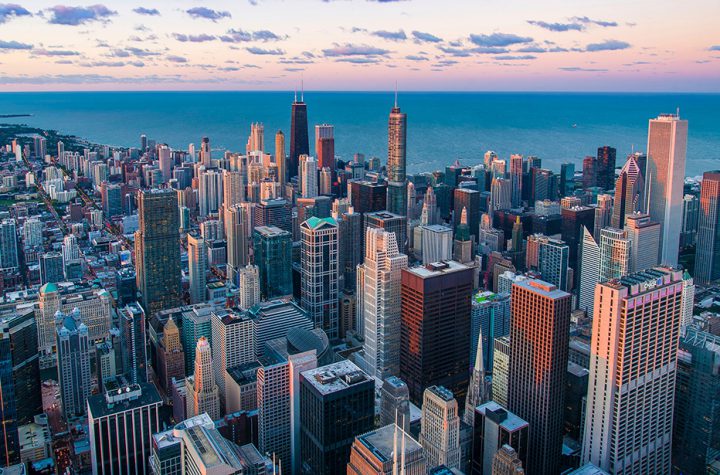
Enlarge/ Students from George Washington University in DC are among those calling for a resolution against the use of facial recognition at their school.
45 with 33 posters participating
Ah, college: that time in a young adult’s life for encountering new friends, new areas of study, ill-advised time management and beverage consumption decisions, and a pervasive surveillance network to track it all.
Sophisticated systems for tracking people have sprung up everywhere as we march through the 21st century, and institutions of higher education are no exception. To that end, digital rights advocacy group Fight for the Future today launched a campaign to get facial recognition off of college campuses. The campaign is partnering with student advocacy groups at The George Washington University in Washington, DC, and DePaul University in Chicago.
“Facial-recognition surveillance spreading to college campuses would put students, faculty, and community members at risk. This type of invasive technology poses a profound threat to our basic liberties, civil rights, and academic freedom,” Evan Greer, deputy director of Fight for the Future, said in a written statement. Greer added that facial recognition is not yet widely seen on college campuses, and she and the members of the campaign hope to keep it that way.
Everything is on the table
While facial recognition may not be standard at universities quite yet, other forms of surveillance have rapidly become pervasive, as students in the 18-25 bracket of course always have with them the most pervasive tracker of all: a mobile phone. Universities in recent years have used students’ phones to track everything from mental health risks to attendance at sporting events. Social media profiles, too, are relentlesslyplumbed.
Late last year, The Washington Post reported on the use of Bluetooth tracking beacons and other technologies to track students’ attendance in class. A professor teaching a large lecture class at Syracuse University told the Post that awarding “attendance points” based on information from Bluetooth trackers in the auditorium has had a positive outcome for him. “They know I’m watching and acting on it,” he told the paper. “So, behaviorally, they change.”
One firm using university WiFi networks to monitor students told the Post it gathered 6,000 location data points per student per day. The Post detailed one such system:
School officials give SpotterEDU the students’ full schedules, and the system can email a professor or adviser automatically if a student skips class or walks in more than two minutes late. The app records a full timeline of the students’ presence so advisers can see whether they left early or stepped out for a break.
Somewhat ironically, turning off your phone to go to class, as professors and teachers have theoretically wanted students to do for at least a decade, harms a student under such a system. According to the Post, one student attending Temple University, “squandered several of his early lectures trying to convince the app he was present, toggling his settings in desperation as professors needled him to put the phone away. He then had to defend himself to campus staff members, who believed the data more than him.”
Keeping a careful eye on students starts well before any set a foot on campus, as universities increasingly use applicants’ personal data, gleaned from Web tracking rather than from applications, for admissions. But schools aren’t solely to blamesome parents enjoy the ability to spy remotely on their grown children when they go away to college, too.
The youngest faces
If facial tracking does become predominant on college campuses, though, an incoming generation of students might be inured to it from the start, as the use of facial-recognition technology in public schools is starting to gain traction around the country.
A facial-recognition pilot slated to launch in Lockport, NY, was delayed following local and national pushback. But the software, known as Aegis, was fully enabled when students came back from winter break at the beginning of this month. While officials were fighting it out in Lockport, though, dozens of other school districts around the country started using some kind of facial recognition. In a three-month span last fall, Government Technology, Wired, and Recode all profiled public K-12 schools using such systems.
In its story, Wired identified eight districts using facial recognition and added there were likely many more it had not identified. One vendor, RealNetworks, told Wired at the time that more than 1,000 school districts expressed interest in its software after the 2018 mass shooting at Marjory Stoneman Douglas High School in Parkland, Florida.





More Stories
After a cluster of new COVID-19 cases among the White House staff and a campaign offical, the election night watch party in the White House has become another symbol of U.S. President Donald Trump’s cavalier attitude toward a virus that is ripping across the …
Rob Lucas says the SA economy is forecast to go backwards by 0.75pc in 2020-21, a better outcome than a national economy forecast to shrink 1.5pc.
Labor and crossbench senators want changes to JobMaker, arguing too many workers will be excluded from the hiring credit scheme.